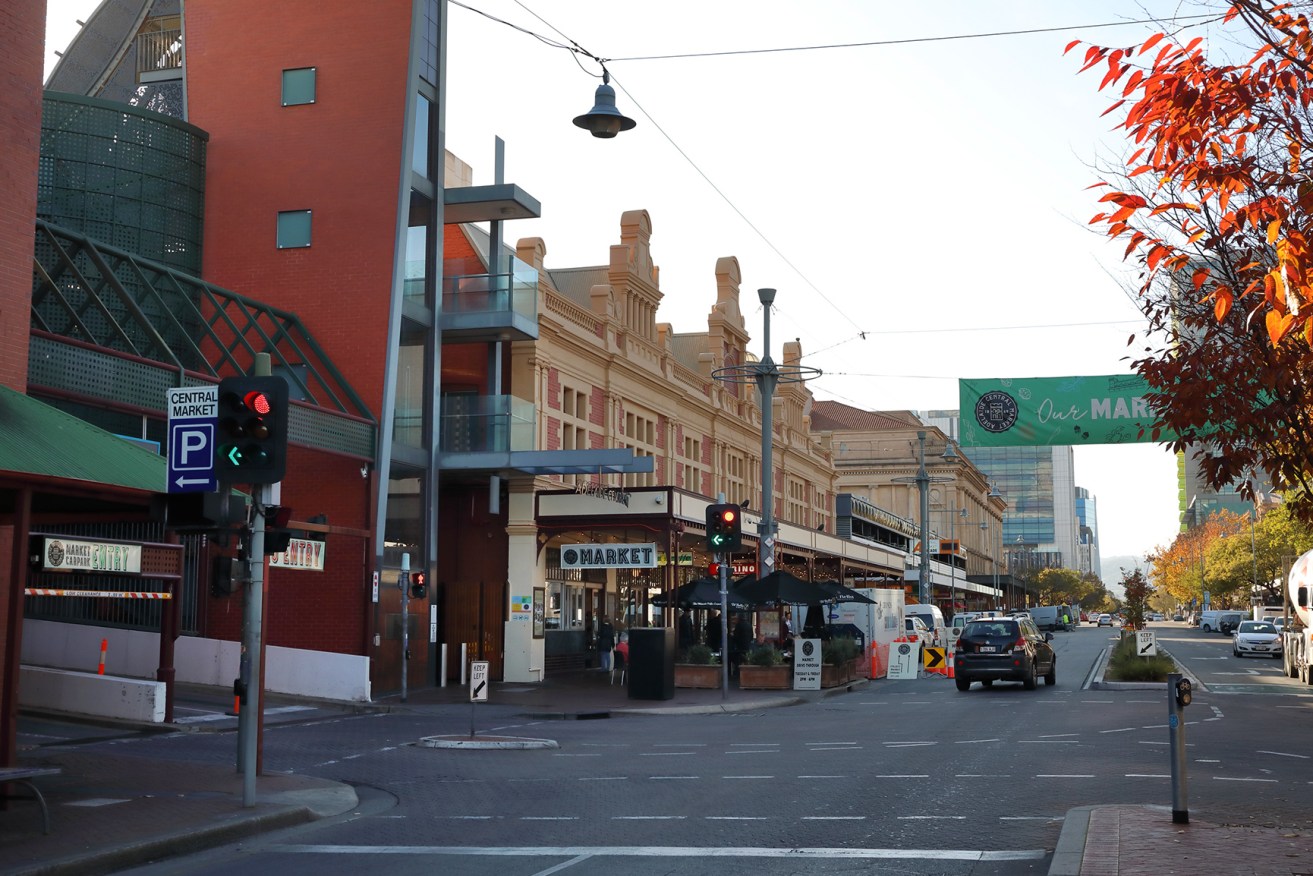City night life slow to recover from 2020 pandemic hangover
Night-time visitation to the Adelaide CBD on weekends is still down 30 per cent on pre-COVID levels as city traders continue to struggle to win back customers.


Gouger Street has improved its vacancy rate from 17 per cent in September 2020 to 13 per cent this month. Photo: Tony Lewis/InDaily
Adelaide City Council’s latest City & Economic Insights report shows day time visitation to the city for the first three months of 2021 was down 5 per cent on 2019 and 2020 and overall night time visitors down 20 per cent.
But it is the 30 per cent drop in night time visitor numbers on Friday and Saturday nights that is exposing the city’s inability to lure recreational patrons to entertainment and retail precincts on weekends.
The report will be presented to city councillors at a Town Hall committee meeting tonight where elected members are expected to discuss the findings.
Adelaide Business Collective secretary David West said the absence of overseas and interstate tourists, as well as international students, had contributed to the drop off in evening visitor numbers.
He said council initiatives such as the establishment of the Adelaide Economic Development Agency in January and voucher schemes were a positive step forward.
“The hospitality sector has had a hard time trying to recover from stop/starts and I don’t think people have got back into the swing of it again yet,” West said.
“It still takes time to change habits and get people back – COVID was with us for a good section of 2020.
The quarterly report also shows 127 vacant business premises across the city’s key precincts of Rundle Mall and Hindley, Gouger, Rundle, Hutt, Melbourne and O’Connell streets with an average vacancy rate at April 2021 of 13 per cent.
Hindley, O’Connell and Rundle streets all had vacancy rates of 14 per cent while the vacancy rate in Rundle Mall was steady at 8.3 per cent.
Gouger Street’s vacancy rate of 13 per cent was a significant improvement on the 17 per cent vacancies reported in September 2020 but still more than double the six per cent reported in June 2018.
Melbourne Street also appears to be on the way back with a vacancy rate of 11 per cent, compared with 13 per cent six months ago.
West, who is also the director of leasing website Retail Adelaide City, said the trend of people working from home on days at either end of the week had contributed to retail and hospitality downturns, particularly on Friday nights.
He said the precincts with vacancies of 14 per cent were “a bit of a concern”.
“Those city streets have been very reliant on restaurants and cafes and I think that is why some of those precincts have suffered a little bit more.
“The two key things for the city moving forward are looking at the business mix and actually where you see the vacancies.
“Then you’ve got to look at the marketing to make sure we can get the customers back – we need foot traffic and it’s going to be a slow and steady process.”
The council report showed the market share of online retail sales in South Australia grew from 12.7 per cent in December 2019 to 16.7 per cent in December 2020.
This contributed to a 12 per cent fall in retail spend in Rundle Mall in the same period and a six per cent drop across major suburban precinct The Parade and Westfield centres in Marion, Tea Tree Plaza and West Lakes.
West said the lack of international students and tourists in the past 12 months had impacted the CBD more significantly than suburban areas.
“The student population is one of the strengths of the city and the city also has 50 hotels in the CBD that are very reliant on tourists,” he said.
“We know the city was losing market share before COVID to the suburban centres and in my view one of the key things we need to pick up is the marketing.
“We need to be much more aggressive in our marketing to attract customers back into the city.”
Tonight’s meeting will include a 30-minute staff presentation of the latest data followed by questions from councillors.
A more detailed workshop on the report is planned for May 18.




